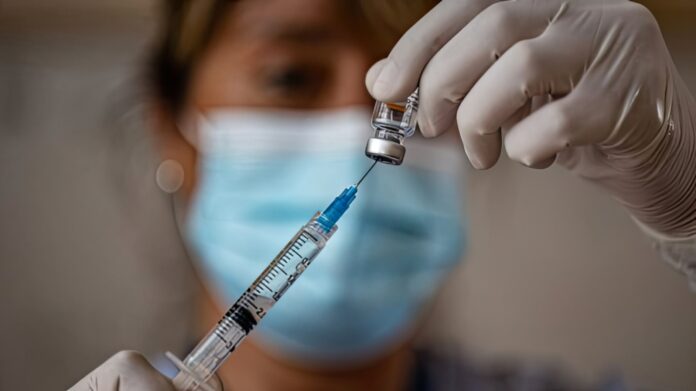First Vaccine for Gonorrhea: A Groundbreaking Public Health Milestone
First vaccine for gonorrhea represents a significant leap forward in global disease prevention. Gonorrhea, a common sexually transmitted infection (STI), has troubled health authorities for more than a century, mainly because of rising antibiotic resistance. According to the World Health Organization, gonorrhea infects over 80 million people worldwide every year. Aside from discomfort and infertility risk, untreated cases can contribute to the further spread of antimicrobial resistance, making the disease harder to treat. Most importantly, until now, no vaccine offered reliable protection.
That has changed. This year, several countries including the United States, New Zealand, and Australia are gearing up to roll out the world’s first approved gonorrhea vaccine. Developed with advanced mRNA and protein subunit technologies, this new vaccine shows efficacy rates exceeding 65% in preventing new infections, as reported by The New England Journal of Medicine. Clinical trials, which included diverse populations across continents, indicate not only reduced infection rates but also fewer severe complications for those still infected. Public health experts predict this vaccine could rapidly decrease global gonorrhea rates and slow the emergence of super-resistant strains.
Besides that, the vaccine rollout represents a beacon of hope for communities most affected by the infection, including young adults and marginalized groups. Education campaigns are accompanying the distribution, helping to dispel myths and encourage uptake. Stakeholders worldwide, including the World Health Organization and CDC, are watching with optimistic anticipation as a new chapter in sexual health begins. For ongoing updates, check the CDC’s Gonorrhea Resource Center.
Measles Outbreak in Texas: Community Action Slows the Spread
While the world welcomes new vaccines, the old threats persist. Recently, a surge in measles cases struck Texas, alarming public health officials and communities alike. Measles is highly contagious and can spread rapidly among unvaccinated populations. This outbreak posed a real threat because vaccination rates had dipped below the recommended threshold in some localities, leaving clusters of residents vulnerable.
Thankfully, swift action made a difference. State and local health departments launched immediate responses—pop-up vaccination clinics, door-to-door awareness drives, and partnerships with schools and faith organizations. Most importantly, these interventions not only increased community immunity but also helped slow the spread dramatically. According to Texas Health and Human Services, daily reported cases have since dropped by over 60% compared to the peak of the outbreak. Families have turned out in record numbers at vaccination events, encouraged by clear communication about vaccine safety and effectiveness. As a result, many districts are now on track to eradicate the outbreak entirely in the coming months.
Healthcare leaders stress that continued vigilance is essential. Herd immunity, maintained through consistent vaccination rates over 95%, is the key to keeping measles in check. Therefore, the recent rally in vaccination serves as a timely reminder of the enduring value of routine immunizations in preventing historic diseases from making a comeback.
Megalodon Diets Investigated: Unveiling Secrets of the Ancient Ocean Giant
While medical science races ahead, paleontologists are diving deep into Earth’s history to answer long-standing questions—this time about the mighty megalodon. Once ruling the prehistoric seas, the megalodon was the largest predatory shark ever to live, with teeth the size of human hands. Scientists have long debated what these immense creatures ate and how their diets shaped marine ecosystems.
Recently, by using advanced isotope and trace element analyses on fossilized megalodon teeth, researchers have challenged old assumptions. In a study published in Nature Scientific Reports, evidence suggests that megalodon had a more varied diet than previously thought. Instead of solely feeding on whales, the megalodon likely consumed a broad range of marine animals, including large fish, seals, and even other sharks. Most importantly, these findings reveal that megalodon’s flexibility as a hunter may have helped it thrive—until changing oceans, shifting prey populations, and competition with emerging predators contributed to its extinction.
This ongoing research broadens our understanding of the ancient food web and provides clues about the dynamics that govern apex predators. Besides that, it underscores the value of paleontology in illustrating the delicate balance within marine ecosystems, both past and present. The use of cutting-edge technology not only reshapes our view of prehistory but also draws parallels to how today’s marine predators may be adapting to rapid environmental change.
Scientific Breakthroughs: Charting the Future of Health and Discovery
Recent headlines—a revolutionary vaccine for gonorrhea, a community’s victory over a measles outbreak, and the unraveling of megalodon diets—highlight the vibrancy and diversity of scientific progress. Most importantly, these stories prove how innovation, cooperation, and curiosity can solve persistent problems and unlock enduring mysteries. As the first vaccine for gonorrhea promises a new era in sexual health, continued vigilance keeps ancient threats like measles at bay. Simultaneously, paleontological research offers a window into our planet’s distant past, reminding us of nature’s complexity and adaptability.
Because science moves forward on multiple fronts, each advancement enhances not only our health and safety but also our appreciation for history. Therefore, let us stay engaged, well-informed, and supportive of the research and community efforts that move us all toward a brighter, healthier future.



